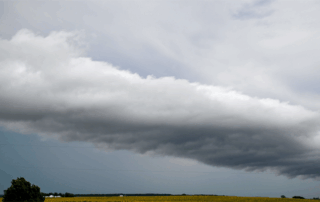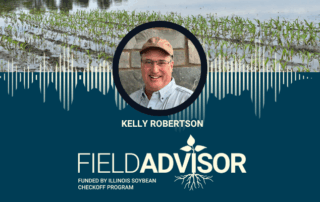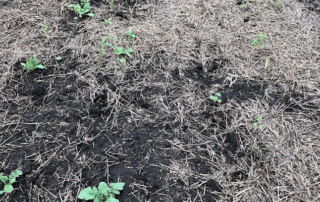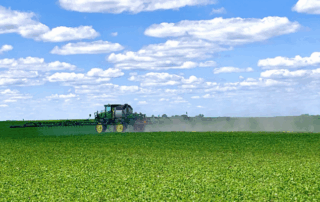Prevented Planting Considerations for 2025
John Pike shares recommendations for managing prevented planting acres with effective weed control and cover crop strategies in preparation for next year’s crop.
Midwest Crops Thrive While the Tropics Stir
From drought-stressed to waterlogged to flourishing, Illinois crops reflect a wide range of conditions as Matt Reardon also looks at Texas floods, an anticipated busy hurricane outlook, and July’s forecast outlook.
Breaking Down Fungicide Decisions: Timing, Products, and ROI
Crop check from the field: IL Soy Envoys Seth Wiley & Mike Wilson, CCA, join the Field Advisor podcast to break down weather impacts, replanting, fungicide strategy and in-season insect and disease pressure.
Excessive Rainfall Strains Growing Season for Southern Illinois Farmers
In this episode, Kelly Robertson of Precision Crop Services, LLC talks about the agronomic and economic consequences of excessive rainfall in Southern Illinois—listen now for a breakdown of delayed planting, stand issues, disease pressure, insurance challenges, and wheat harvest setbacks.
Ridge Riding Thunderstorms Stare Down the Midwest
After a spring marked by extreme weather, Matt Reardon shares how potential storms, summer heat, and some meteorological history could shape the forecast in the weeks to come.
Weather Trends to Watch: Illinois Rain Events and Drought in June
Senior atmospheric scientist Matt Reardon joins the Field Advisor podcast to unpack the weather trends impacting Illinois fields and beyond.
June Scouting Report: Weather Swings, Weed Pressure and What’s Ahead
On this Field Advisor episode, Kelsey Litchfield and Illinois Soy Envoys discuss early June crop conditions, weed control, cover crop termination, and scouting fields.
Illinois Soybean Growers Invited to Help Shape Climate Tools for Ag Production
Illinois soybean growers are invited to a workshop on July 30 to help shape new climate tools that support smarter, more resilient farming decisions.
How to Avoid Herbicide Carry-Over for Fall Cover Crops
Early-season weather disruptions can increase the risk of herbicide carryover and limit fall cover crop options—IL Soy Envoy Torey Colburn explains what to watch for.
To Spray or Not to Spray? Making Herbicide Decisions in Dry Conditions
Group 15 herbicides vary in activation thresholds and soil persistence—IL Soy Envoy Seth Wiley shares how to match the right chemistry to field conditions when rain is scarce.












 and then
and then